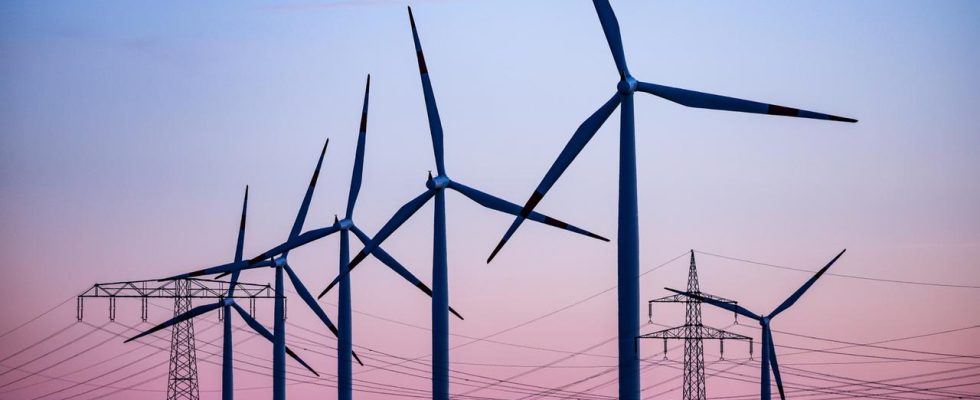Too little green electricity is produced in the south and too much in the north. But due to the slow expansion of the network, there are no lines for transporting excess electricity. The result: billions in costs – which also affect electricity prices.
The German energy industry is expecting additional billions in costs to stabilize the German power grid in the next few years. The main causes include the delay in grid expansion and the insufficient expansion of renewable energies in the south compared to the high demand.
According to associations, companies and economists, these factors will make complex “network congestion management” necessary in the coming years.
Too much green electricity in the north, too little in the south
But what does “bottleneck management” mean? In the north more green electricity is produced than is consumed, in the south it is the other way around. That’s why more electricity needs to be transported from north to south. Because the construction of the “SuedLink” and “SuedOstLink” high-voltage lines has been delayed for years, the line capacity is often not sufficient.
Green electricity systems – including many wind turbines in the north – are then “curtailed”, i.e. temporarily switched off, so that the network does not become clogged. In the south, however, conventional power plants, which produce much more expensive electricity, have to be started up. “It is not always possible to transport electricity from the generation plants to the consumers,” explained a spokesman for the Federal Network Agency. Included in the costs of bottleneck management is the remuneration for unused green electricity, which is essentially generated for the rubbish bin.
Costs in the billions
In 2022, the four transmission system operators paid 900 million euros for this alone; in 2021, according to the Federal Network Agency, it was 800 million. According to a spokesman for the authority, almost three percent of green electricity was curtailed in 2022 – but the interventions were small compared to total electricity generation. But over the years this adds up to billions.
There are no figures yet on the total costs of bottleneck management for the entire year 2023. According to the Federal Network Agency, in the first half of 2023 it was more than 1.6 billion euros. In 2022 as a whole it was 4.2 billion, partly due to the increase in gas prices. The network operator Tennet assumes that it could take around ten years to reduce the costs of network interventions to a minimum.
Measures affect electricity prices
The interventions in the generation output of power plants are called “redispatch” measures. According to the Federal Association of the Energy and Water Industry (BDEW), it is difficult to predict whether these could increase further in the future. “In the short term, no reduction in redispatch costs can be expected,” predicted Kerstin Andreae, chairwoman of the BDEW board of directors.
Experts warn that the rising network fees as a result of the large “redispatch” effort are having an impact on electricity prices. The congestion costs are included in the uniform nationwide transmission network fees, and the electricity exchange price is also nationwide. According to calculations by the portals Verivox and Check24, overall network fees will be around a quarter more expensive this year, around 100 euros per year for a family of four.
“Market prices corresponding to the actual costs would be lower in the north and higher in the south, and very high in Bavaria and Baden-Württemberg,” said economist Mathias Mier from the Munich ifo Institute. “In this sense, the ‘redispatch’ is a reverse state financial equalization, from which companies in southern Germany benefit greatly.” When it comes to electricity supply, the whole of Germany shares in the higher costs in the south, including those caused by politics. “Private households in particular pay for this,” says Mier.
Requirement to be divided into several Electricity price zones
According to the original planning, the two large direct current lines (HVDC) should have been completed in 2022. The former Bavarian Prime Minister Horst Seehofer (CSU) insisted on laying it as an underground cable, which will delay completion until 2027/28. A prominent opponent of the route was Free Voters leader Hubert Aiwanger, who is now even calling for a third line. Laying underground cables not only takes years longer, but is also about twice as expensive as building overhead lines.
The BDEW is calling for network expansion and conversion to be accelerated; the large power lines in particular must be completed quickly. But that won’t solve the problem, says energy expert Mier. There is actually only one long-term solution: “dividing Germany into two or more electricity price zones.” Northern Germany would then have a competitive advantage in terms of electricity prices. Politics and business in the south naturally reject a division into two zones.

